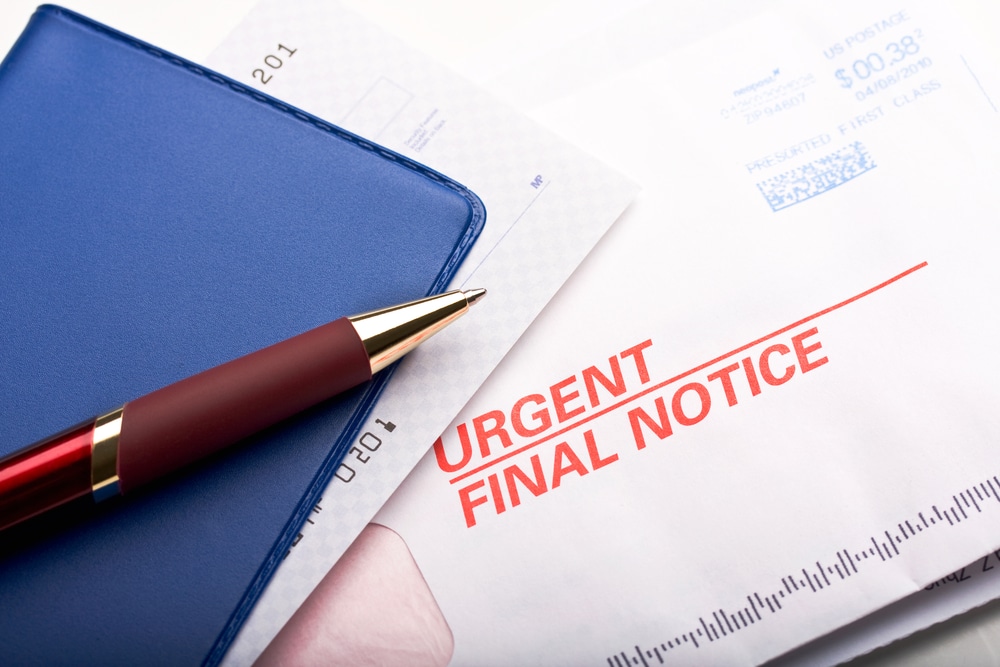How to Remove Negative Items from Credit Report Before 7 Years
Stuck with a negative mark that’s tanking your credit score? You might not have to wait 7 years.
Most negative information stays on your credit report for up to 7 years. But in some cases, you can get certain items removed much sooner—legally and without shady tactics.

Whether the item is inaccurate, already paid off, or added due to a one-time mistake, there are ways to get it taken off. Strategies include filing disputes, negotiating pay-for-delete agreements, requesting goodwill deletions, or leveraging your legal rights under federal credit laws.
Read on for proven methods that actually work—not myths or gimmicks.
What Types of Negative Items Can Appear on a Credit Report?
Before you try to remove something, you need to know what you're dealing with. Here are the most common types of negative items that show up on a credit report:
- Late payments – Reported after 30 days past due
- Charge-offs – Unpaid debts written off by the original creditor
- Collections – Debts sent to third-party collection agencies
- Bankruptcies – Public record of discharged or restructured debts
- Foreclosures – When a lender takes your home due to nonpayment
- Repossessions – Loss of a vehicle or other asset due to missed payments
- Judgments and liens – Legal actions that may still be reported if unpaid
Some of these are easier to remove than others. For example, inaccurate or unverifiable information is often removed quickly. On the other hand, bankruptcies and foreclosures are harder to dispute unless there's an error.
See also: How Long Do Negative Items Stay on Your Credit Report?
1. Dispute Inaccurate or Unverified Information
Errors happen more often than you might think. If something on your credit report isn’t accurate or can’t be verified, you have every right to dispute it and have it removed.
How to Spot Errors That May Qualify for Removal
Here are common mistakes to look for:
- Wrong dates – For example, a late payment showing up earlier or later than it should
- Incorrect balances or account statuses – Like a debt marked as unpaid even after you’ve paid it
- Creditor name mix-ups – Especially if you’ve dealt with multiple lenders
- Duplicate entries – The same debt listed more than once
- Accounts that aren’t yours – Often due to identity theft or mixed credit files
If you spot anything like this, it's worth filing a dispute.
How to File a Credit Report Dispute
You can dispute inaccurate information with each credit bureau—Equifax, Experian, and TransUnion. Here's how:
- Get a copy of your credit report from each bureau at AnnualCreditReport.com.
- Highlight the error and gather supporting documents—payment records, letters from the lender, etc.
- File the dispute online or by mail:
- Online: Go directly to the bureau’s dispute page
- By mail: Send a dispute letter with copies (not originals) of your documents
- Wait for a response—credit bureaus have 30 days to investigate and respond
If the creditor can’t verify the item or confirm it’s accurate, it must be removed.
[Your Name]
[Your Address]
[City, State, ZIP Code]
[Date]
[Credit Bureau Name]
[Credit Bureau Address]
Re: Credit Report Dispute – [Account Name or Number]
To whom it may concern,
I am writing to dispute the following item on my credit report. The item is inaccurate and should be removed.
Item to Dispute:
- Creditor Name: [Name of creditor]
- Account Number: [Account number]
- Reported Error: [Describe the issue clearly—wrong date, balance, etc.]
Enclosed are copies of documents supporting my position. Please investigate this matter and remove the incorrect item from my credit report.
Sincerely,
[Your Name]
[Your Signature (if mailing)]
2. Ask for a Goodwill Deletion
If the item on your credit report is accurate, but you’ve already paid it—and have a solid payment record—a goodwill letter might work.
When a Goodwill Letter Works
Goodwill deletions are more likely to succeed if:
- You’ve already paid the balance or brought the account current
- You normally pay on time and the derogatory mark was a one-time slip
- There’s a legitimate reason behind the late payment—like a medical emergency or temporary hardship
Creditors aren’t required to grant your request, but many will if you’ve been a responsible customer.
How to Write an Effective Goodwill Letter
Keep your goodwill letter short, polite, and honest. Explain what happened and why it won’t happen again. Don’t argue or demand.
What to include:
- Your name and account number
- A brief explanation of the late payment or issue
- A request to have the negative item removed as a goodwill gesture
- Appreciation for their time and support
How to Send It—and Follow Up
- Mail it directly to the creditor’s address listed on your credit report
- Use physical mail or email if available
- Wait 2–4 weeks before following up
If they say no, you can always try again in a few months—or try a different method like pay-for-delete (covered next).
3. Negotiate a Pay-for-Delete Agreement
If you're dealing with a collection account, you may be able to strike a deal: pay the debt, and in return, the collector removes the negative item from your credit report. This is known as a pay-for-delete agreement.
While not every agency will agree, some do—especially smaller or independent collectors. And when they follow through, it can give your credit score a boost.
What Is Pay-for-Delete?
A pay-for-delete is a written agreement between you and a collection agency. You agree to pay some or all of the balance, and they agree to remove the item from your credit reports once payment is received.
It’s a way to clean up your credit while settling the debt.
When This Works (And When It Doesn’t)
This approach can be hit or miss. Here’s what to know:
- More likely to work with third-party debt collectors – Original creditors almost never do this.
- It’s not guaranteed – Some collectors refuse as a matter of policy.
- Credit bureaus don’t endorse it – Technically, it goes against their reporting standards, but some agencies do it anyway.
- Always get written proof before paying – Never rely on a verbal promise.
[Your Name]
[Your Address]
[City, State, ZIP Code]
[Date]
[Debt Collector’s Name]
[Collector’s Address]
Re: Pay-for-Delete Request – [Account Number]
To whom it may concern,
I am writing in reference to the account listed above. I am willing to pay [amount] as full settlement of the debt, under the condition that you agree to delete this account from all credit reporting agencies (Equifax, Experian, and TransUnion).
If you agree to these terms, please send a written confirmation on your company’s letterhead. Once I receive your written agreement, I will promptly send the agreed-upon payment.
This letter is not an acknowledgment or admission of the debt. It is a good faith effort to resolve the matter.
Sincerely,
[Your Name]

4. Settle for “Paid as Agreed” or “Settled” Updates
If a creditor or collector won’t agree to delete the item, you can still ask them to update the account status. Having an account marked as “paid” or “settled” won’t erase the history, but it can look better to lenders and may help your credit score over time.
It shows you resolved the debt—even if it was late or went to collections.
- “Paid as agreed” is best, especially for original creditors.
- “Settled” is common when you negotiate for less than the full balance.
- These updates stay on your credit report, but they’re better than “unpaid” or “in collection.”
This is often a fallback if pay-for-delete doesn’t work.
5. Use Legal Leverage: FCRA and FDCPA Violations
If a creditor or collector breaks the law, you may be able to force removal of negative items—or even sue for damages. Two laws protect your rights: the Fair Credit Reporting Act (FCRA) and the Fair Debt Collection Practices Act (FDCPA).
Violations aren’t rare, and they can give you leverage to clean up your credit.
When to Consider Legal Action
Look out for the following:
- A debt collector continues to report false or unverifiable information
- You requested validation and didn’t receive it
- They kept calling you after asking them to stop
- The item was supposed to fall off, but it didn’t
These are all potential violations you can act on.
How to File a Complaint or Take Legal Steps
You have options:
- File a complaint with the Consumer Financial Protection Bureau (CFPB) – This can lead to faster results if the agency wants to avoid an investigation.
- Sue in small claims court – If you have proof of a violation, you may be entitled to $1,000 or more.
- Hire a consumer protection attorney – Some lawyers take these cases without charging upfront.
You don’t need to tolerate abusive or illegal reporting practices. You have rights—and tools to enforce them.
6. Hire a Reputable Credit Repair Company (Optional)
Sometimes it makes sense to bring in professional help—especially if you’re dealing with multiple negative items, or you’re not comfortable handling disputes yourself.
A good credit repair company can take over the paperwork and communication. But you need to be cautious about who you trust.
When It’s Worth Paying for Help
- You’ve already tried to remove items yourself but hit a wall
- You’re dealing with identity theft or inaccurate public records
- You don’t have the time or bandwidth to manage the process
Just know that hiring a company won’t give you access to special tools. They use the same dispute process available to you.
What to Watch Out For
Many companies overpromise or flat-out scam people. Avoid any company that:
- Charges fees upfront before doing any work
- Guarantees they’ll “fix” your credit or remove accurate items
- Tells you to dispute everything, even if it’s true
Legitimate companies follow the Credit Repair Organizations Act (CROA) and will be transparent about what they can—and can’t—do.
What Not to Do: Credit Repair Scams and Quick Fix Myths
If something sounds too good to be true, it probably is. Here’s what to avoid:
- “New credit identity” schemes – These are illegal and could lead to jail time
- Fake tradelines or credit boosting tricks – Often expensive, rarely work, and sometimes fraudulent
- Disputing everything at once – This might get a few items temporarily removed, but it usually backfires and hurts your credibility
The goal is to clean up your credit honestly—not risk worse problems later.
See also: Credit Repair Scams: How to Spot Them & Protect Yourself
How Long Does It Take to See Results?
Credit repair takes time, but results can start showing up sooner than you think:
- Disputes – Usually resolved within 30–45 days
- Goodwill letters – Can take 2–8 weeks for a response
- Pay-for-delete agreements – Timeline depends on negotiation and how fast the collector reports the change
In some cases, you’ll see changes in just a few weeks. In others, it might take a few months. Be consistent, and track everything you send and receive.
Conclusion
You don’t have to wait 7 years for negative items to disappear. In many cases, you can remove them early—or make them less damaging—with the right approach.
Start with a dispute if something looks inaccurate. If that doesn’t work, try a goodwill letter or a pay-for-delete agreement. Use legal protections when needed, and don’t rule out professional help if it makes sense for your situation.
Clean credit doesn’t happen overnight, but small steps add up. And the sooner you take action, the sooner your credit score can start climbing again.



